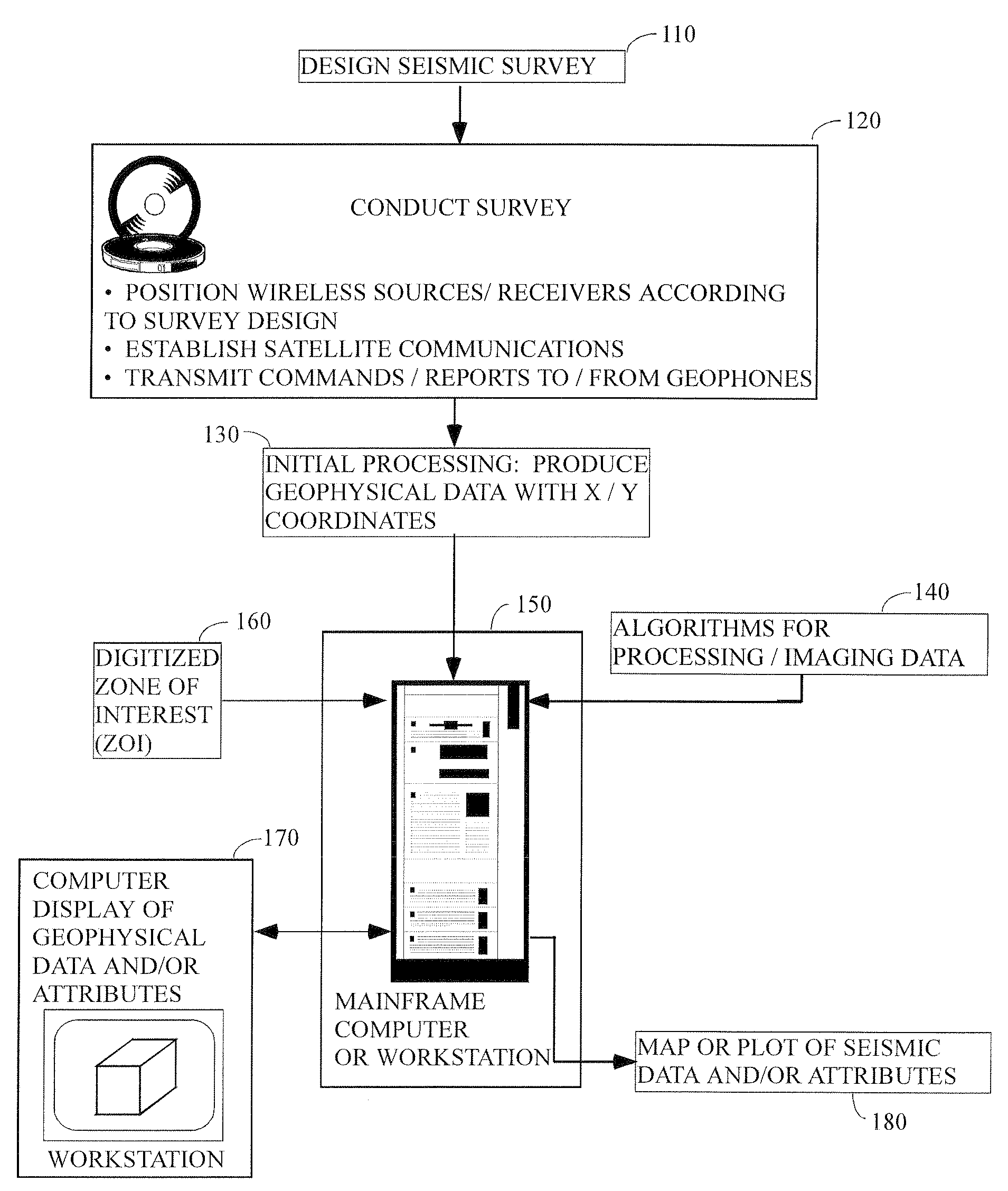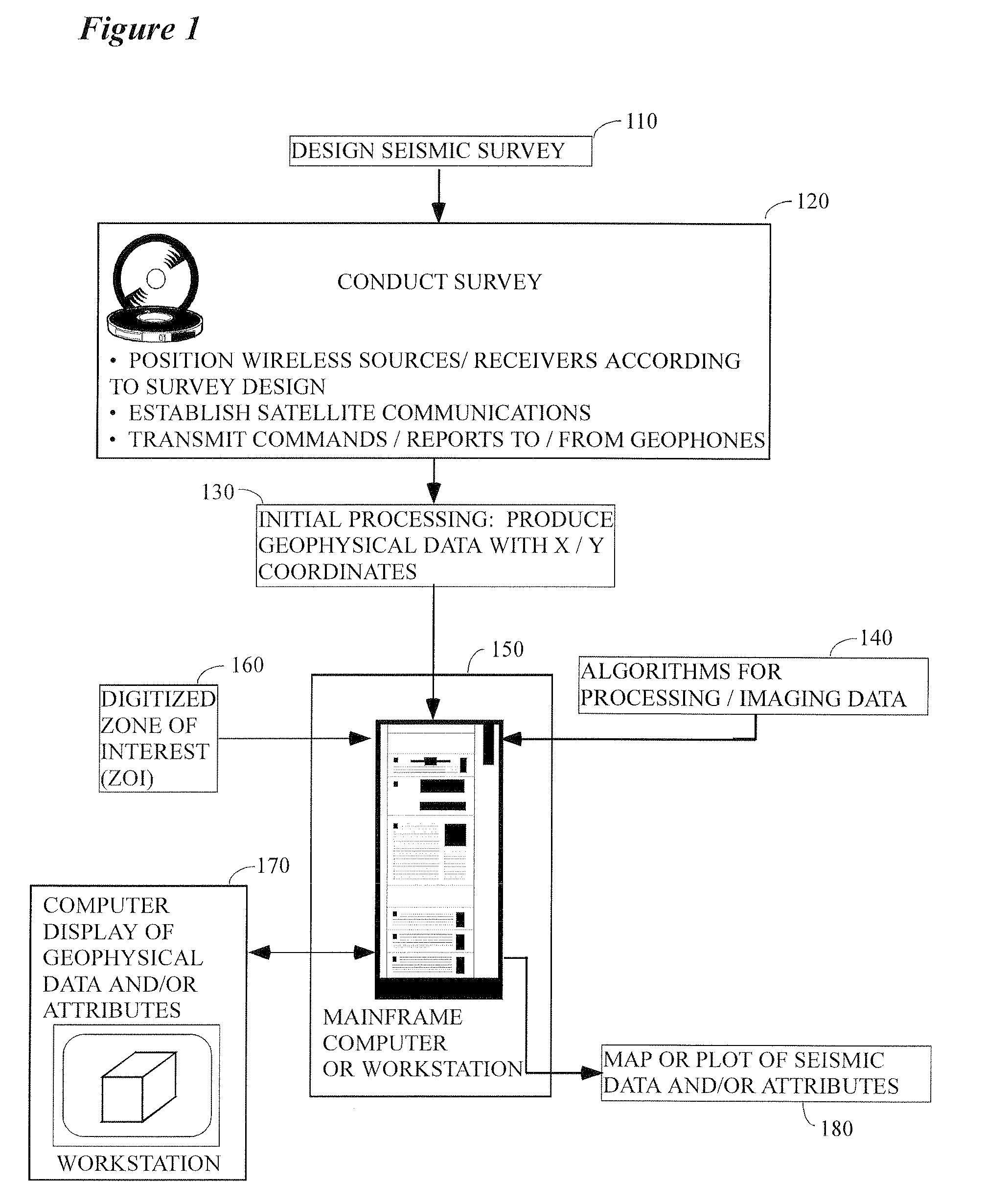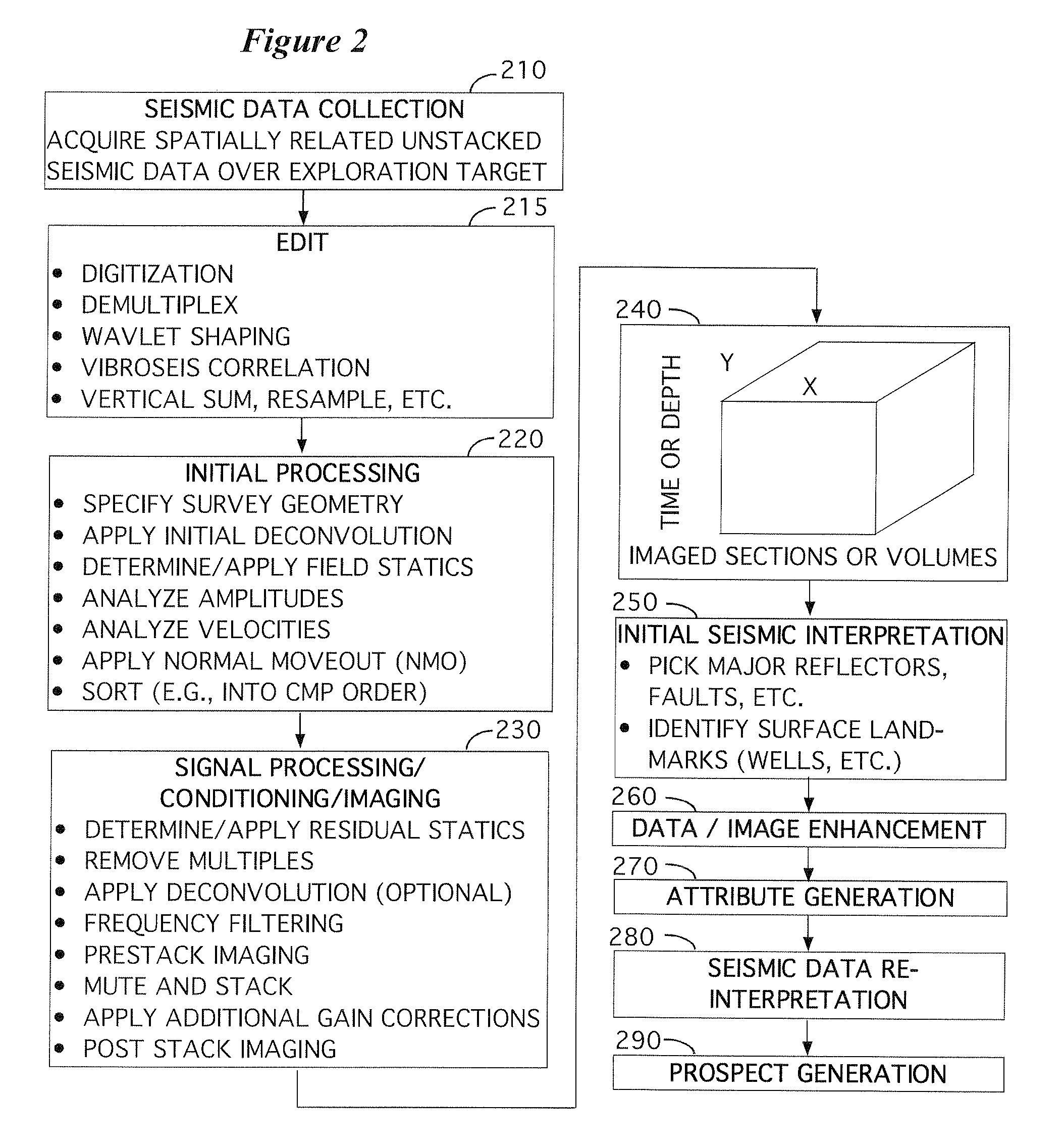Satellite communications with cableless seismographs
a cableless, satellite technology, applied in the field of seismic exploration, can solve the problems of increasing the weight of the cable that connects each geophone (or geophone array) to a central recording unit, difficult to maneuver a conventional seismic line into position, and often compromised image of the subsurface, so as to increase the power requirements of that unit, add cost and weight
- Summary
- Abstract
- Description
- Claims
- Application Information
AI Technical Summary
Benefits of technology
Problems solved by technology
Method used
Image
Examples
Embodiment Construction
[0031]While this invention is susceptible of embodiment in many different forms, there is shown in the drawings, and will herein be described hereinafter in detail, some specific embodiments of the instant invention. It should be understood, however, that the present disclosure is to be considered an exemplification of the principles of the invention and is not intended to limit the invention to the specific embodiments or algorithms so described.
General Environment of the Invention
[0032]FIG. 1 illustrates the general environment in which the instant invention would typically be used. Seismic data 110 are collected in the field over a subsurface target of potential economic importance and are typically sent thereafter to a processing center or other ground station. Seismic surveys might be conducted on either land or water, but for purposes of the instant invention land acquisition only will be considered. It should be noted that the instant invention would typically be utilized du...
PUM
 Login to View More
Login to View More Abstract
Description
Claims
Application Information
 Login to View More
Login to View More - R&D
- Intellectual Property
- Life Sciences
- Materials
- Tech Scout
- Unparalleled Data Quality
- Higher Quality Content
- 60% Fewer Hallucinations
Browse by: Latest US Patents, China's latest patents, Technical Efficacy Thesaurus, Application Domain, Technology Topic, Popular Technical Reports.
© 2025 PatSnap. All rights reserved.Legal|Privacy policy|Modern Slavery Act Transparency Statement|Sitemap|About US| Contact US: help@patsnap.com



